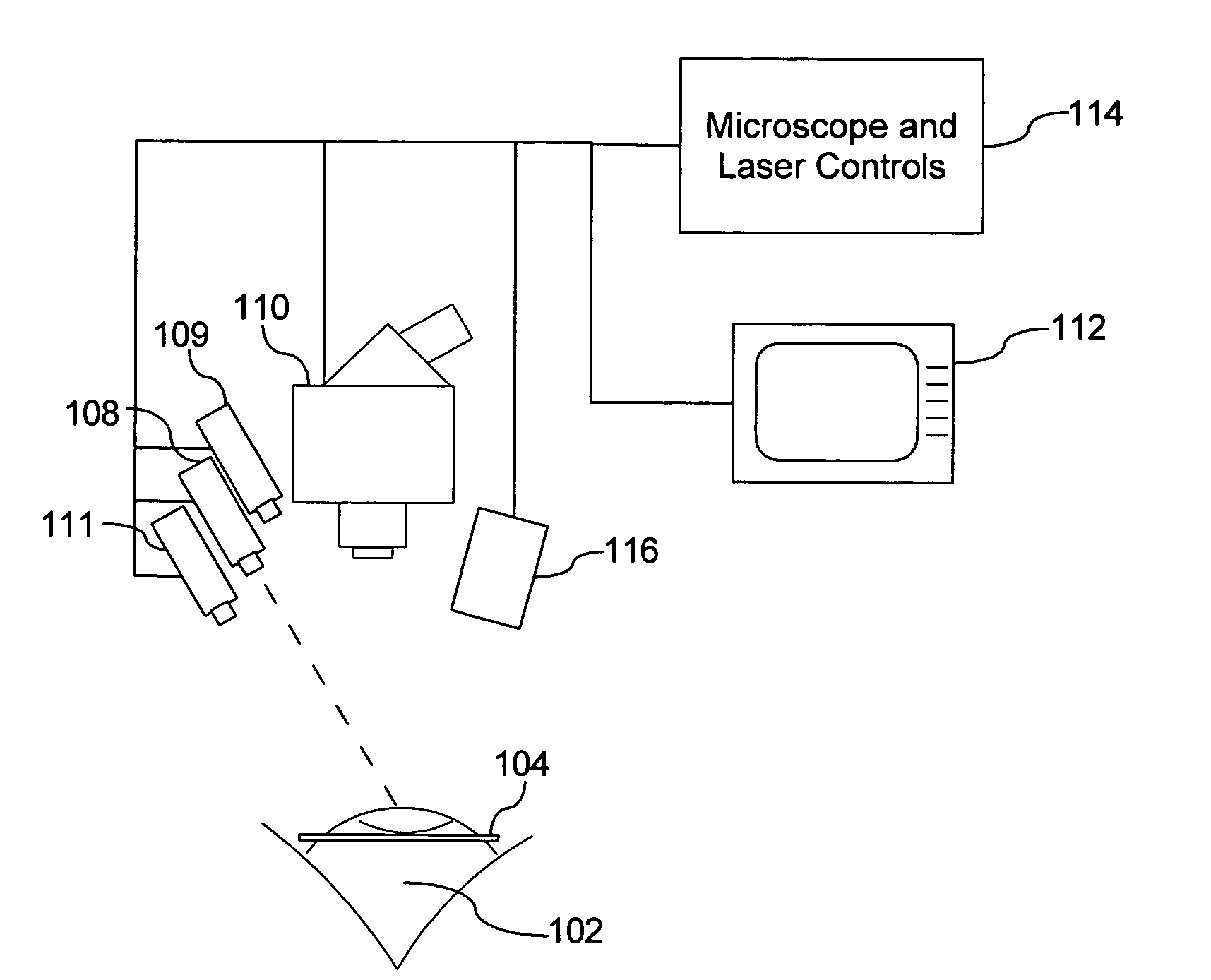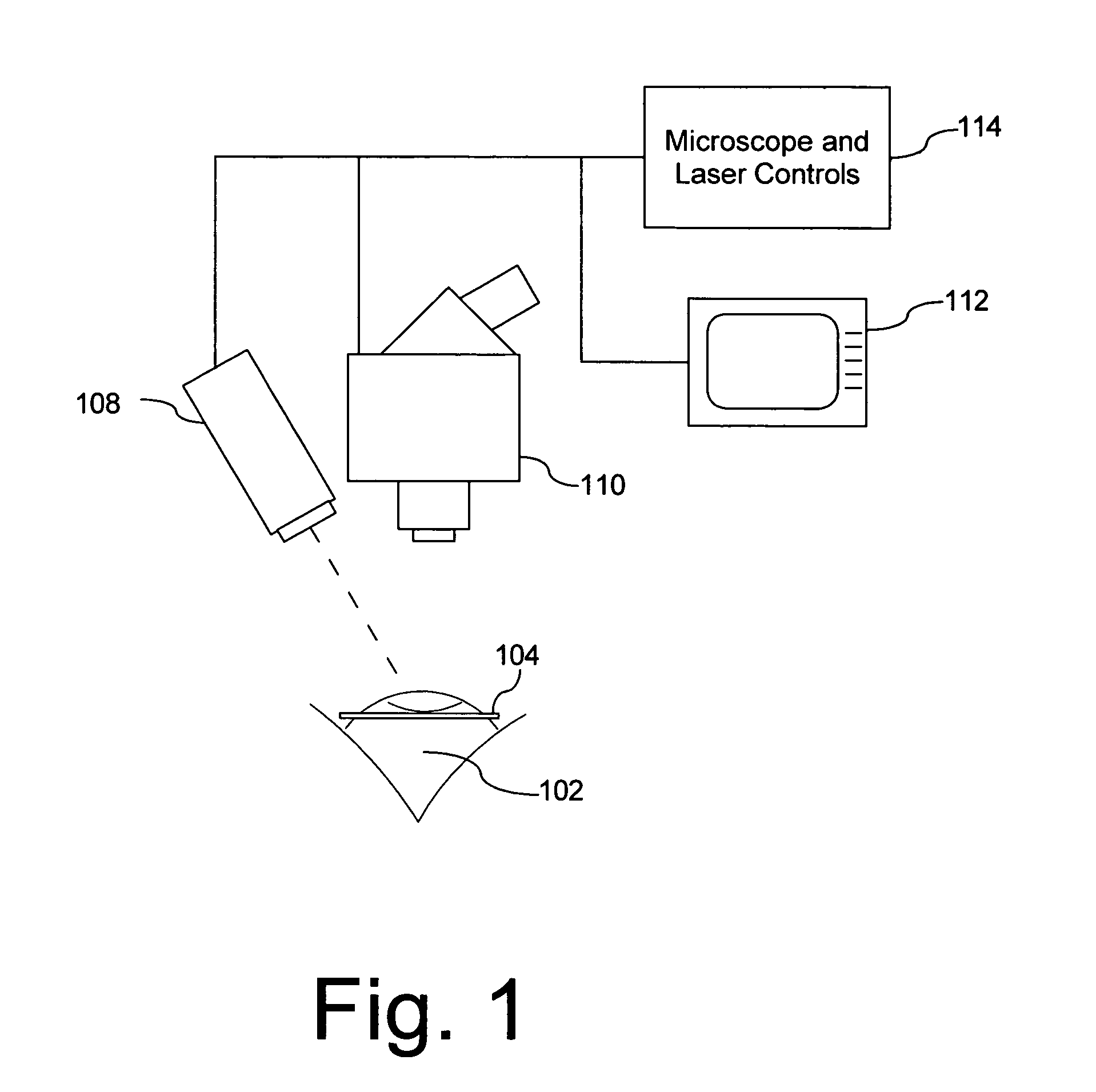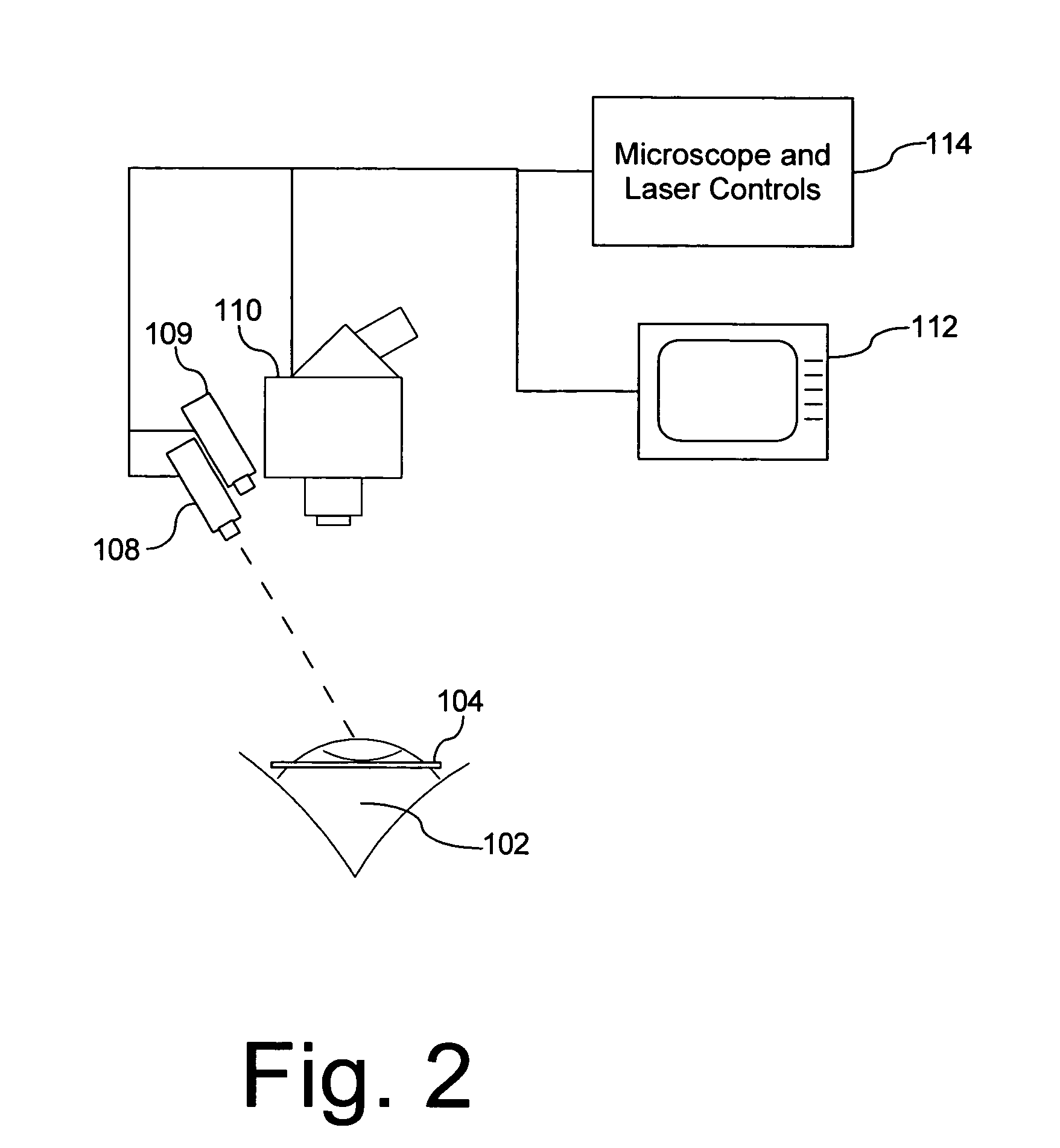Method of treatment of ocular compartment syndromes
a technology treatment method, which is applied in the field of treatment of ocular compartment syndrome to achieve the effect of relieving at least one symptom of ocular compartment syndrom
- Summary
- Abstract
- Description
- Claims
- Application Information
AI Technical Summary
Benefits of technology
Problems solved by technology
Method used
Image
Examples
Embodiment Construction
[0047]The present invention makes use of laser photoablation, photodisruption, photocoagulation, or a combination thereof, in order to decompress an ocular compartment syndrome. In the case of a central retinal vein occlusion, laser energy is directed at the site of vascular compression, usually at the level of the lamina cribrosa. In the case of branch retinal vein occlusions, laser energy is delivered to the fascial sheath which binds the retinal vein to its companion artery so as to decompress the site of venous compression. In the case of non-arteritic anterior ischemic optic neuropathy (NAAION) or papilledema, the laser energy is directed at the optic nerve and / or nerve sheath in much the same way a surgical blade would be directed at the nerve in order to perform a traditional surgical radial neurotomy.
[0048]The advantageous qualities of photoablation make the process desirable for the controlled decompression of the lamina cribrosa in the area of an occluded central retinal v...
PUM
 Login to View More
Login to View More Abstract
Description
Claims
Application Information
 Login to View More
Login to View More - R&D
- Intellectual Property
- Life Sciences
- Materials
- Tech Scout
- Unparalleled Data Quality
- Higher Quality Content
- 60% Fewer Hallucinations
Browse by: Latest US Patents, China's latest patents, Technical Efficacy Thesaurus, Application Domain, Technology Topic, Popular Technical Reports.
© 2025 PatSnap. All rights reserved.Legal|Privacy policy|Modern Slavery Act Transparency Statement|Sitemap|About US| Contact US: help@patsnap.com



